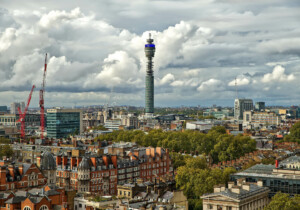MIPIM takes place in the most complicated, counterintuitive series of convention halls on the Mediterranean waterfront.
In trying to find the basement registration hall I ran into Ben Van Berkel who tried to help, but was having his own problems finding the ‘innovation forum’ that is the center of the architecture presentations. He claims he attends every other year because he can meet, in two days, 15 to 20 old and potential new clients.
In the forum, we heard HOK present their Responsive Cities project that mines municipal data and then expresses it in maps that can be used by architects to drop future projects into and understand how they interact with the existing city. They showed a HOK sports stadium that might then become a useable bridge and public space during the day when it is not used for sports events.
Speaking of models, MIPIM has a collection of the most fantastic scale models of cities like London and Istanbul that are enough of a reason for the design press to come to this event.
This technical forum then morphed into a talk by Arik Levy, the Israeli/French designer who showed how to create value through the placements of art in projects and also bring culture to the places where working people spend their days. The forum was sponsored by Vitra, and they used their famous Swiss campus as an example of high design to super-charge daily life.
We also met with Asudio, a young firm of ex-Foster employees who started up during an economic downturn and were able to get a series of schools projects that taught them to work efficiently and on-budget to produce impressive low-budget public work. They have also just started a new venture ‘63,000 Homes’ that they hope can steer clients into creating work with innovative plans, uses, and architecture
Asudio showed a new project that was meant to be a single commercial building, but they convinced the client to create two buildings that used a heat exchanger to transfer the daytime heat generated for the commercial space to heat the residential spaces when they needed the warmth during the day. There seem to be no end of the high technological solutions to everyday urban problems here at MIPIM. More tomorrow.










